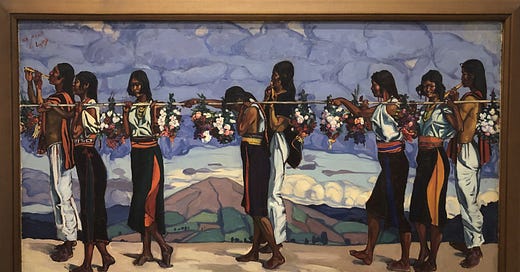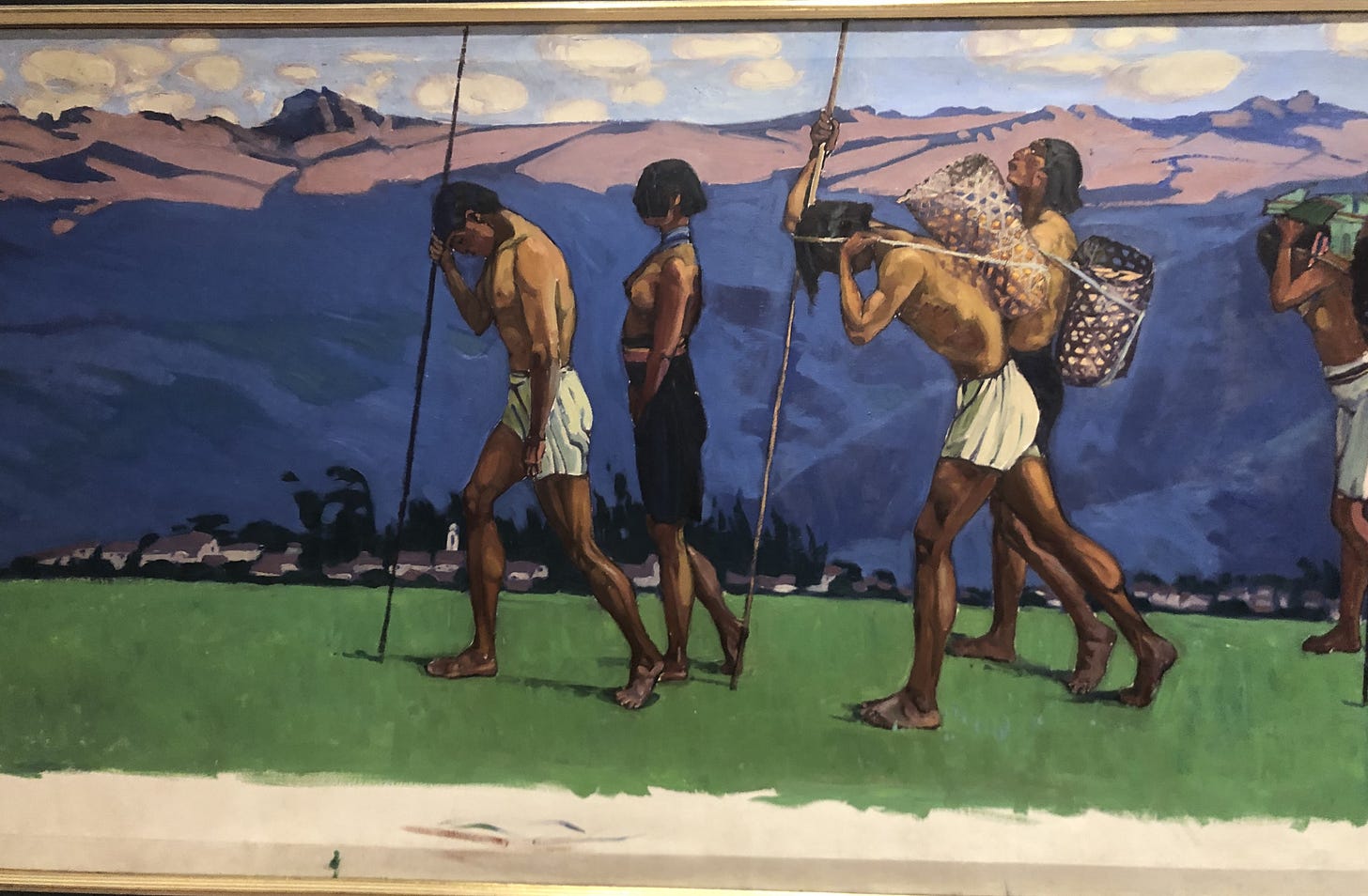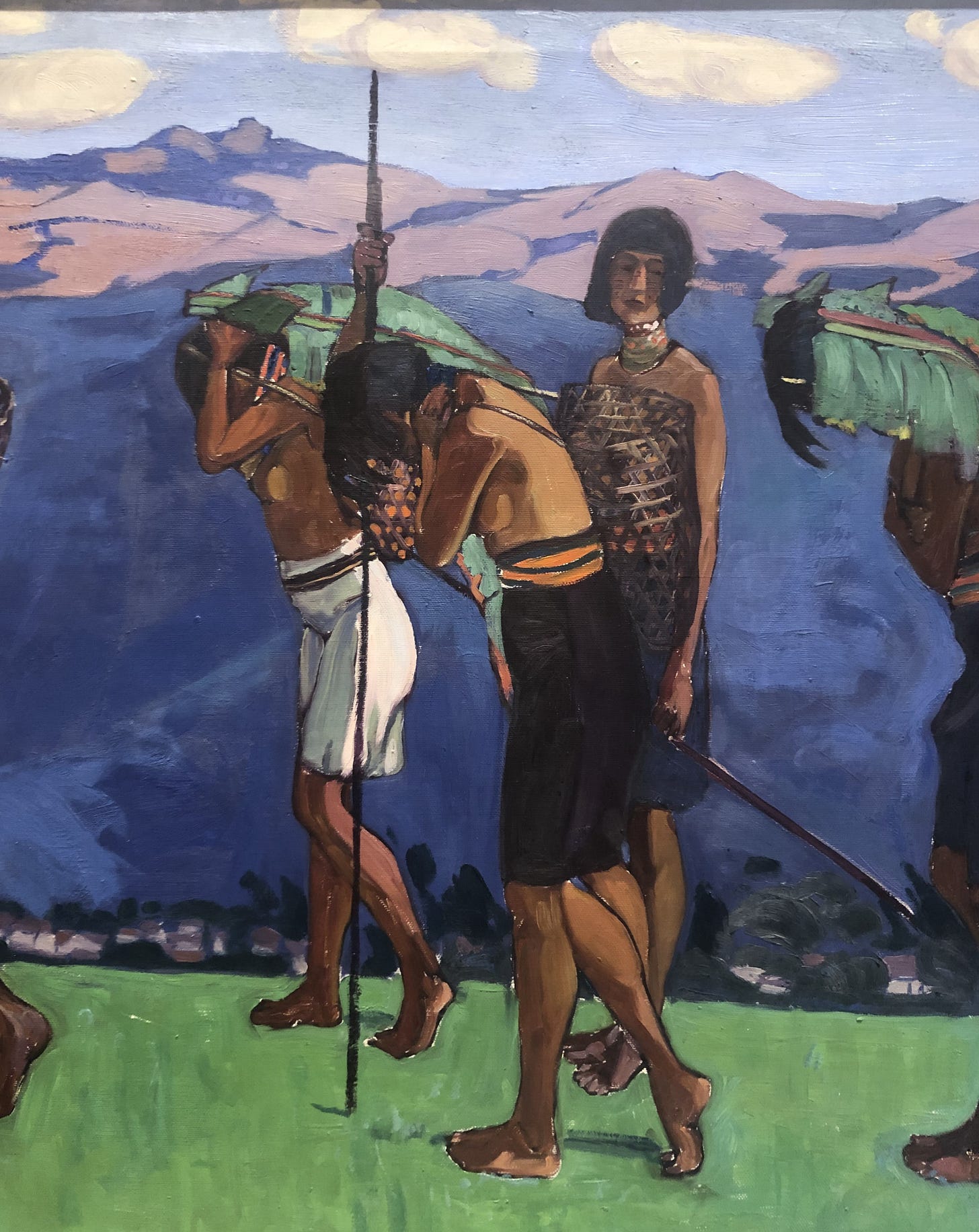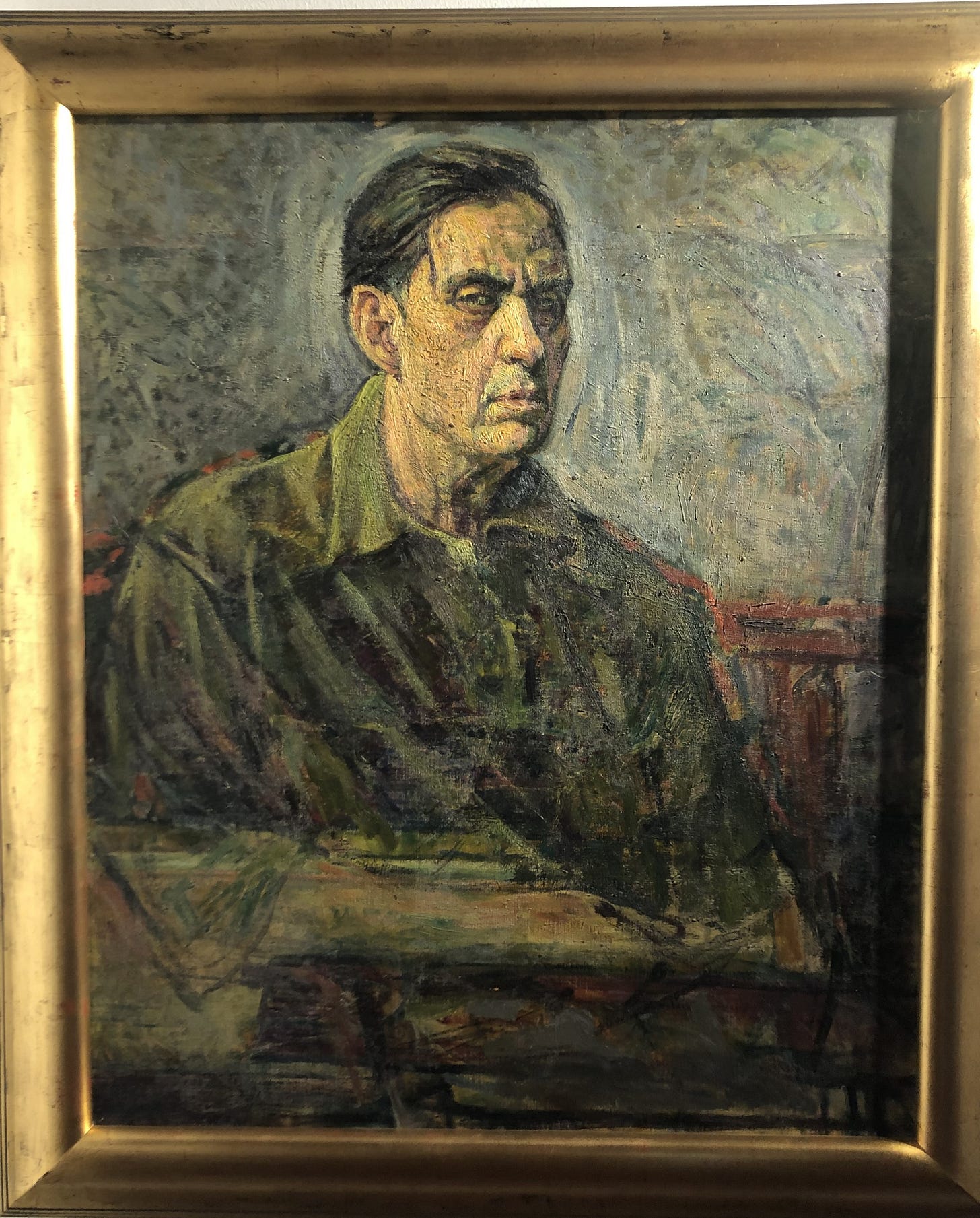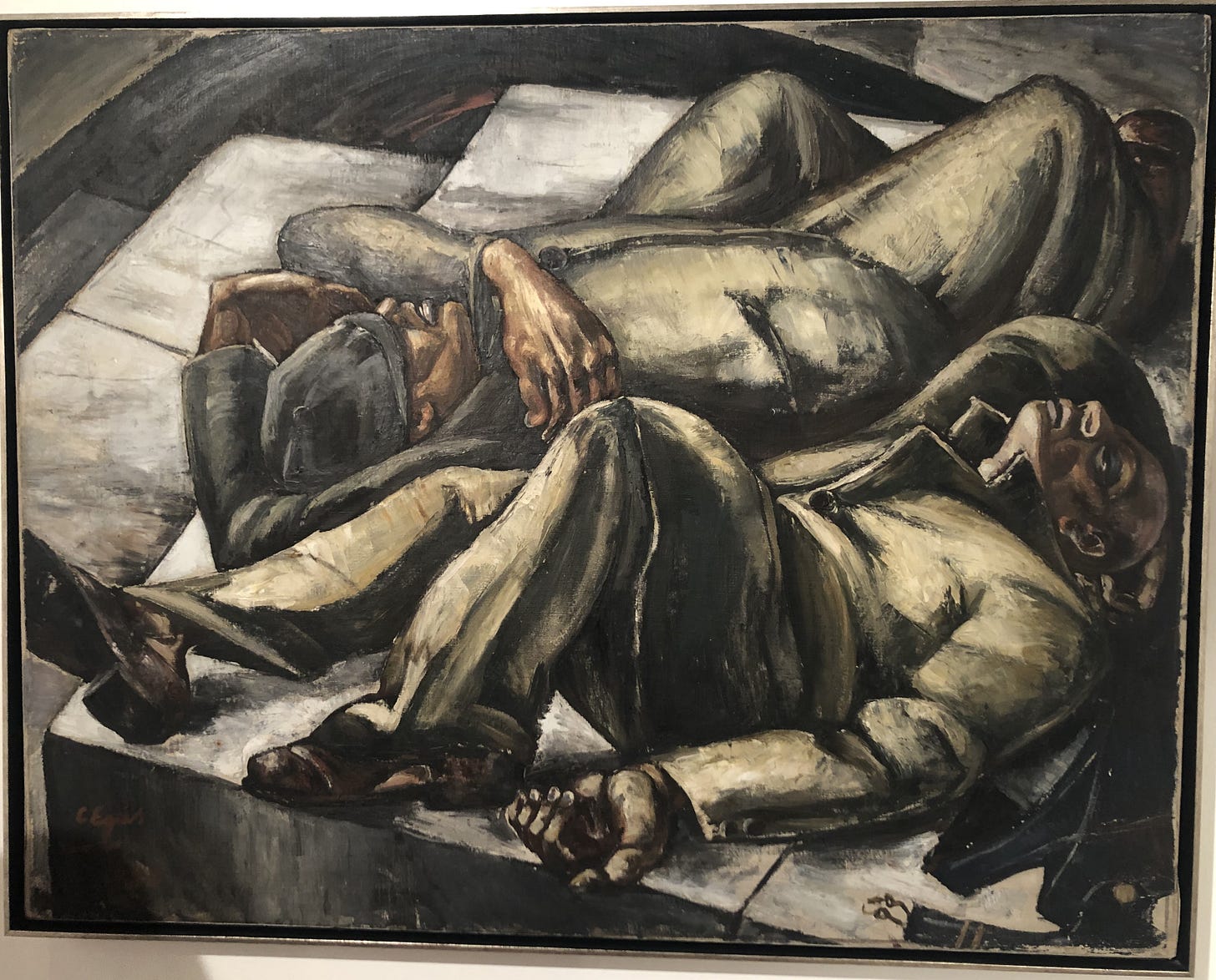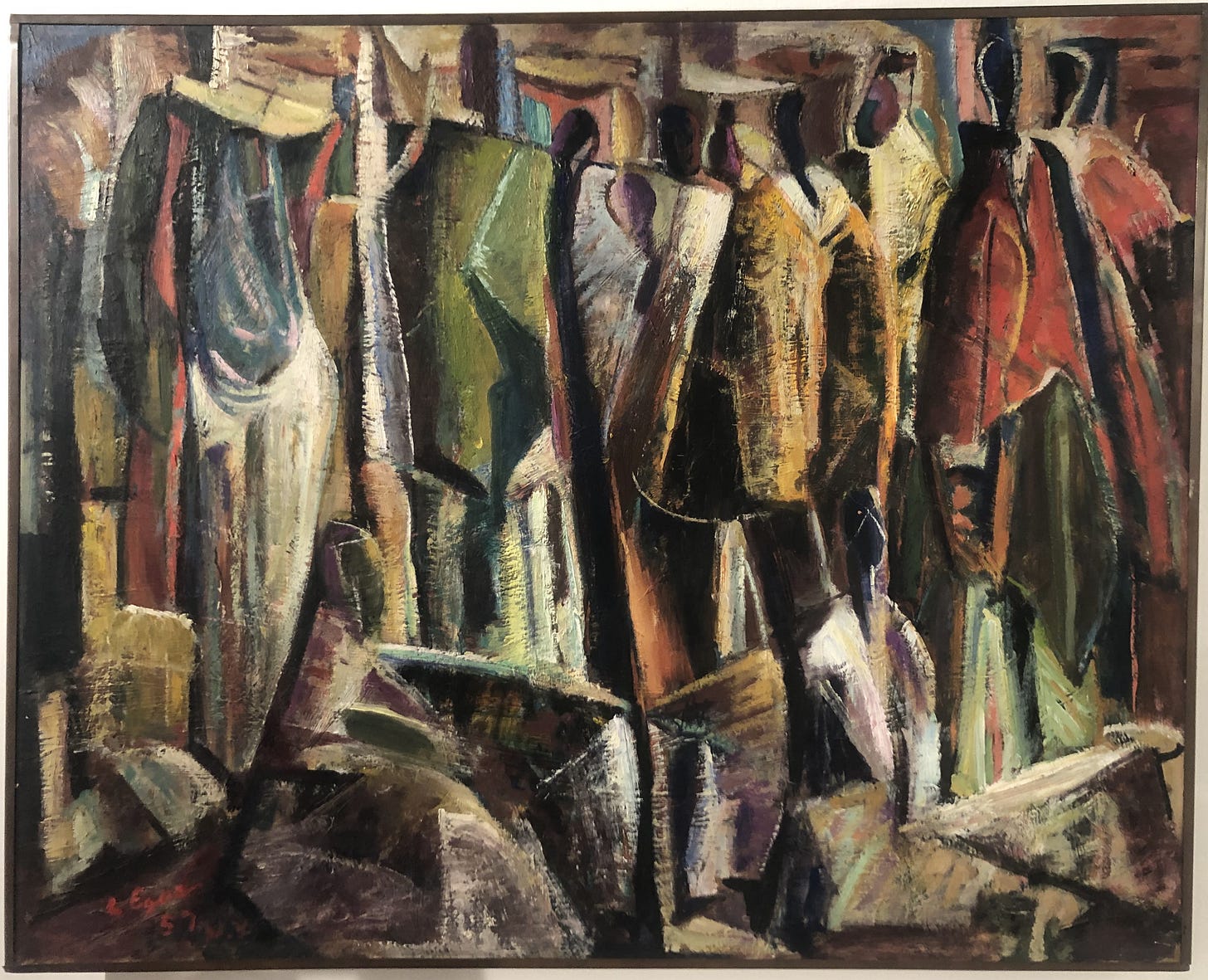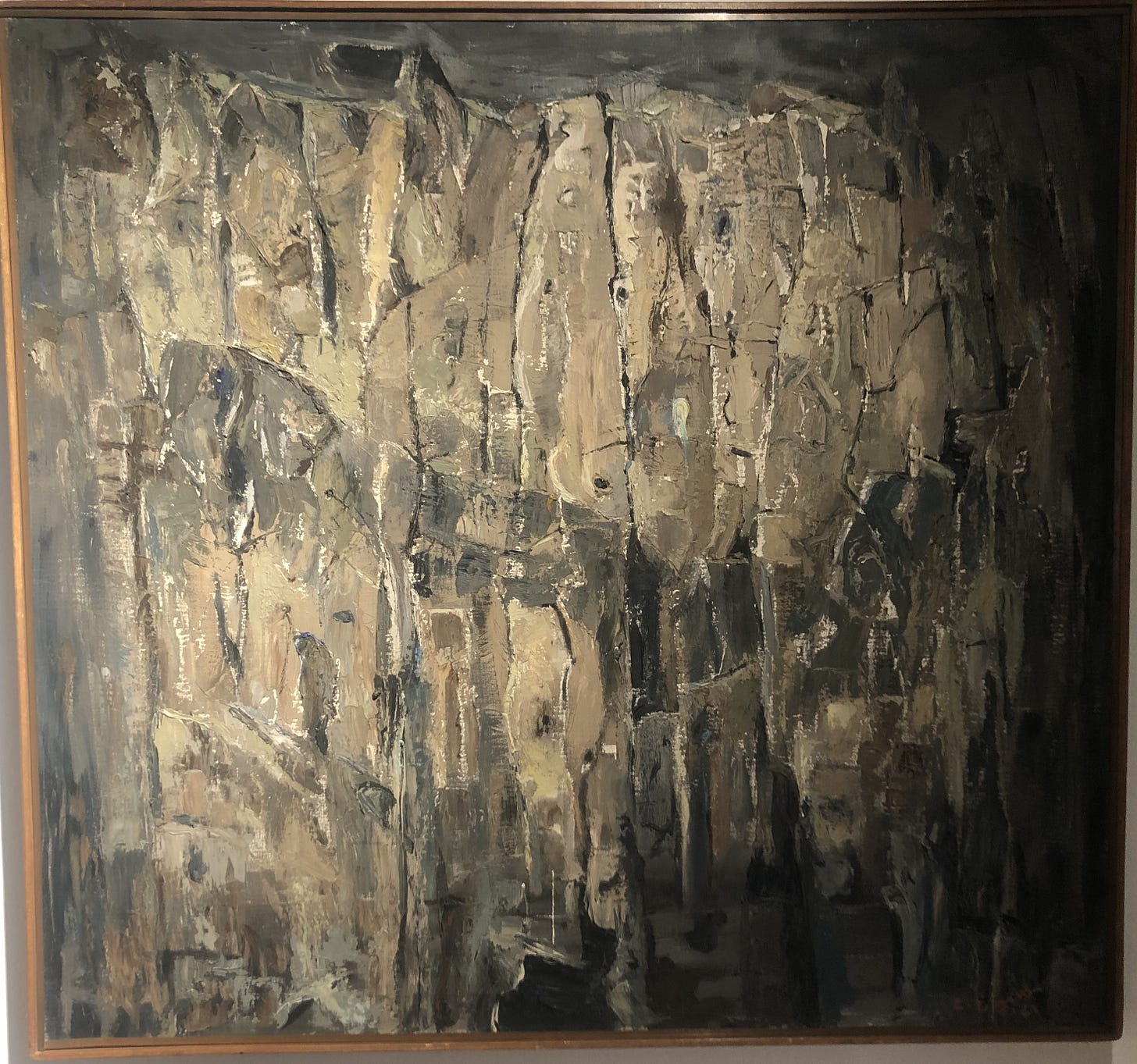If you read the post about my Saturday sightseeing in Quito, now you’re ready to see some art.
I found a website with a biography of Camilo Egas and examples of his work. It is in Spanish, but can be translated. You could also just scan his Wikipedia page.
This is my amateur art historian take on the work of Camilo Egas, so take it for what it’s worth - it’s all just my personal opinion.
Egas’ early works are well known for focusing on the details of the indigenous people of Ecuador. His work is some of the first to highlight and draw attention to the grace and beauty of the indigenous people and their traditions. These paintings are quite large and impressive. It is a challenge to fit the whole image into a photo. Only one shows the full image. The others are sections or details from his indigenous paintings. Most of these were done in the 1920s.
I feel as if this detail illustrates the modernist influence on Egas’ view of the indigenous people. This young woman facing the viewer is beautiful, but reminds me more of a 1920s flapper, with her bobbed hair. I have no expertise on the hair styles or clothing of Ecuador’s indigenous people at this time. Perhaps I am the one applying my cultural biases on the art and not Egas. It’s still an interesting detail to note. She does stand out as different from the rest of the procession here, and he does place her in the center of the painting, looking back at us, while all the other members of the group plod on, with eyes and heads downcast.
The colors are exceptionally vibrant and dramatic: the contrast between the deep blue and pink of the mountains, the large green leaves, the rich browns of the skin tone, and the green grass. The fluid movement of the people is exceptional as it conveys an element of both grace and exertion as they walk along this path.
At the end of the tour, I spoke briefly with the tour guide about how much I loved the art and the parts I understood about his descriptions of Egas’ artistic transitions. Before we left, one of the staff gave me two postcards from the museum. One of the of building exterior, and the second was a reproduction of this piece. I love the skeptical squint he has here. Almost as if he is judging himself while in the process of painting himself.
Egas moved to New York and saw the effects of the Depression on the people of United States. This is when his work took on an element of social commentary. Here he shows us two men sleeping on the street. The title roughly translates to Homeless Workers. Americans were suffering from poverty and unemployment through the U.S., and certainly in urban areas like New York City. His image conveys a feeling of exhaustion and desperation just as powerfully as any photograph of the time. Maybe he saw it and felt it with more empathy because he was not an American.
By the 1950s, Egas appears to have transitioned to a cubist, abstract style reminiscent of Pablo Picasso or Georges Braque. The figures are recognizable as people, but most of their individuality is gone. The are formed from geometric shapes and subtle curves. There is still a graceful beauty about this image. The figure on the left, with the hat covering his face stands out. You can really appreciate the tired slouch, carrying a bag on his shoulder, and hands in pockets. This is one of my favorite pieces from this period.
Finally we come to the final piece and the total transition to abstract-expressionism. There are no more recognizable images here. This is one of Egas’ last paintings before his death in 1962. The texture, color, and pattern suggest a close view of a tree. The dark colors and title reference the end of the day and beginning of the evening, possibly even the approach of death. The topic and colors are dark, but I find this one rather calm and soothing, as if he has accepted the inevitable and is preparing himself for his last transition from creative genius to whatever comes at the end.
Walking through Museo Camilo Egas was a wonderful experience. Looking at his life’s work and learning about someone I previous knew nothing about, was what makes travel such a joy. Maybe art is not your thing, but where ever you go, I encourage you to take some time to find something new and savor it.
That’s all for now. Ciao!
The content of this blog post is mine and mine alone, and does not reflect the views of the U.S. Government, the Peace Corps, or the Ecuadorian Government.


